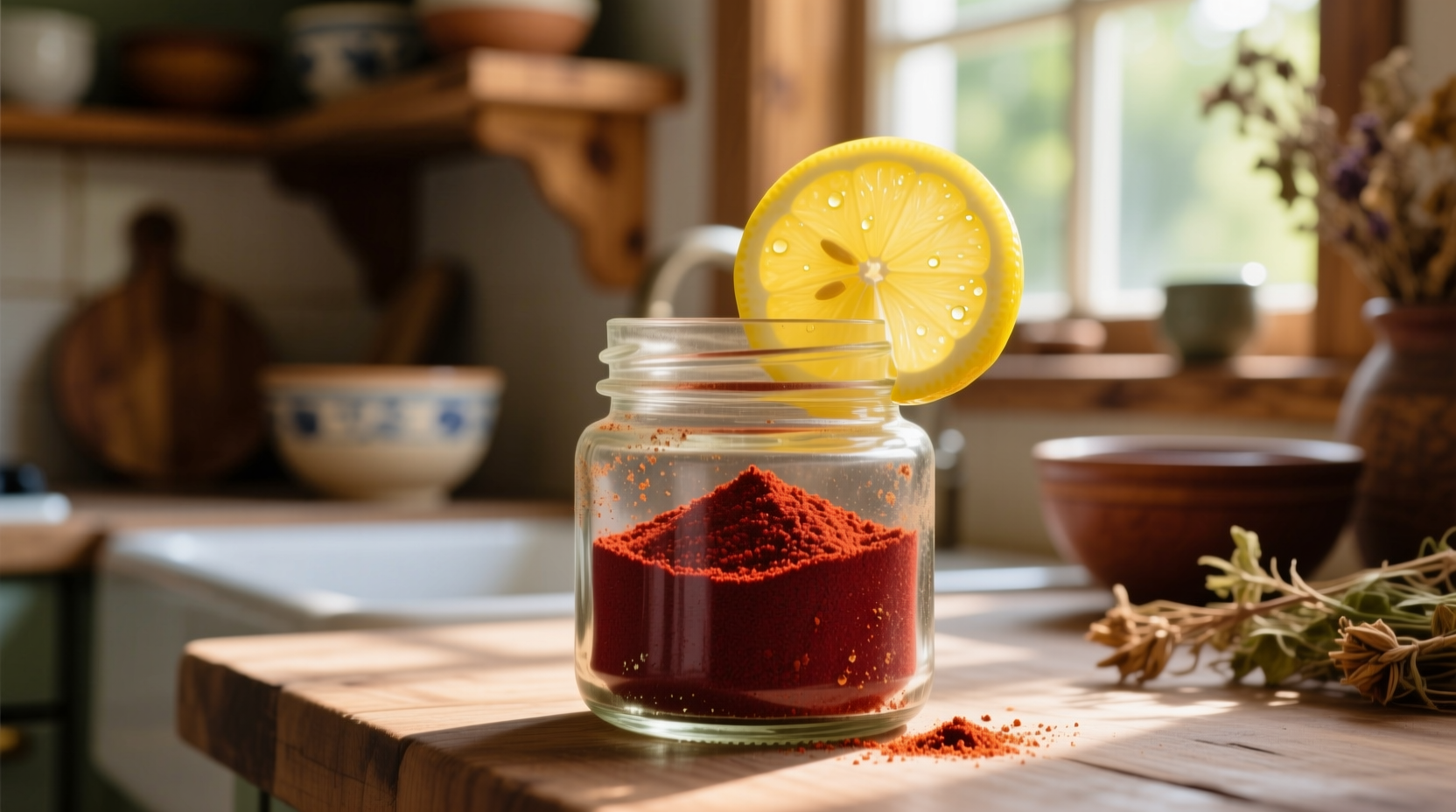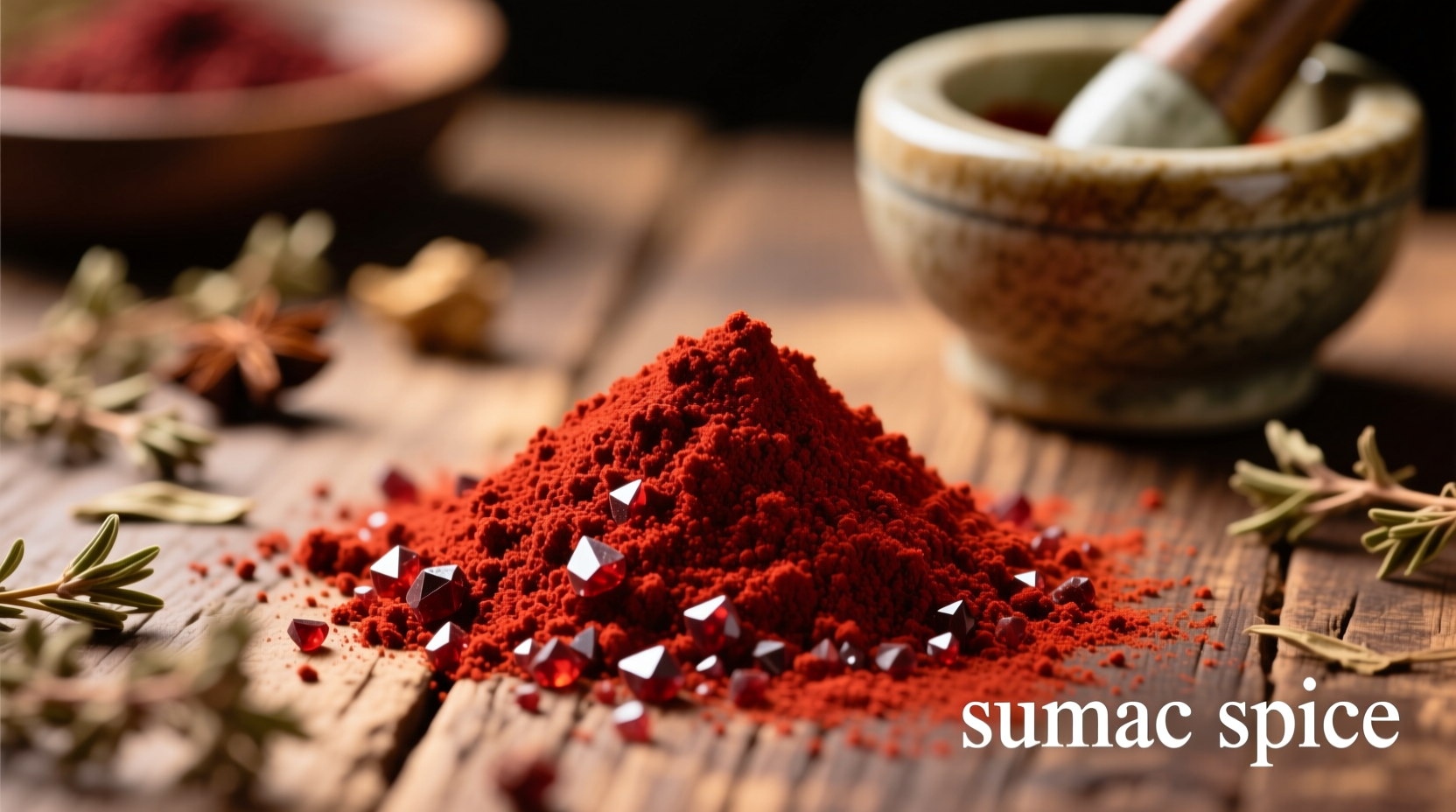Unlock the secret ingredient that transforms ordinary meals into extraordinary culinary experiences. Sumac spice delivers a bright, tangy flavor that chefs and home cooks rely on for adding depth without overwhelming acidity. Whether you're exploring Mediterranean cuisine or seeking natural flavor enhancers, understanding sumac spice opens doors to authentic cooking techniques practiced for centuries across continents.
What Exactly Is Sumac Spice?
Sumac spice comes from the dried, ground berries of the Rhus coriaria plant, a species native to the Mediterranean region and parts of Asia. Unlike its North American relative poison sumac (Toxicodendron vernix), culinary sumac is completely safe for consumption and has been used in cooking for thousands of years. The deep burgundy berries are harvested in late summer, dried naturally, and finely ground to produce the distinctive red powder found in spice racks worldwide.
The harvesting process significantly impacts quality. Traditional methods involve hand-picking fully ripened berries during dry weather to preserve their natural tartness. According to agricultural research from the University of California's Department of Plant Sciences, sumac berries contain high levels of malic acid, which gives them their characteristic tangy flavor profile that remains stable during storage.

Understanding Sumac's Unique Flavor Profile
Sumac delivers a complex flavor experience that combines tartness with subtle floral notes and a hint of earthiness. Unlike lemon juice or vinegar, sumac provides sour notes without adding liquid to dishes, making it invaluable for dry rubs and finishing touches. Professional chefs describe its taste as reminiscent of wild strawberries with citrus undertones—bright but never harsh.
| Flavor Component | Sumac | Lemon Juice | Vinegar |
|---|---|---|---|
| pH Level | 4.5-5.0 | 2.0-2.6 | 2.4-3.4 |
| Tartness Quality | Bright, complex | Sharp, acidic | Pungent |
| Moisture Content | Dry powder | Liquid | Liquid |
| Color Impact | Vibrant red | Yellow tint | Clear |
This comparison explains why sumac has become chefs' preferred choice for adding tang without altering texture. Food scientists at the American Chemical Society note that sumac's gentler acidity preserves delicate ingredients while still providing the brightening effect cooks seek.
Sumac Through the Ages: A Culinary Timeline
Sumac's journey from ancient remedy to modern kitchen staple spans millennia. Archaeological evidence from the Levant region shows sumac usage dating back to 5000 BCE, where it served both culinary and medicinal purposes. During the Ottoman Empire (1299-1922), sumac became a cornerstone of regional cuisine, featuring prominently in royal kitchens across three continents.
The spice trade routes documented by historians at the Smithsonian Institution reveal sumac's path from Mediterranean shores to European markets during the Middle Ages. While largely replaced by lemon in Western Europe after citrus cultivation expanded, sumac maintained its culinary significance throughout the Middle East and North Africa. Modern food historians note a significant resurgence in sumac's popularity since the 2010s as global cuisine exploration increased.
Practical Kitchen Applications for Home Cooks
Integrating sumac into your cooking requires understanding its versatile applications. Start with these proven techniques used by professional chefs:
- Finishing touch: Sprinkle 1-2 teaspoons over hummus, baba ganoush, or roasted vegetables just before serving
- Dry rubs: Combine with paprika, cumin, and garlic powder for meats (use 1 tablespoon per pound)
- Salad dressings: Replace half the lemon juice with 1 teaspoon sumac for richer flavor complexity
- Rice and grains: Stir 1 teaspoon into cooked rice or quinoa for subtle tartness
When substituting for acidic ingredients, remember that sumac works differently than liquid acids. The University of Massachusetts Amherst's Food Science Department recommends using sumac at the end of cooking to preserve its volatile flavor compounds, unlike vinegar which benefits from longer cooking times.
When Sumac Shines—and When to Choose Alternatives
Understanding sumac's context boundaries ensures optimal results in your cooking. This spice excels in applications where:
- You need dry tartness without added moisture
- Vibrant red color enhances presentation
- Subtle floral notes complement other spices
- Delicate ingredients require gentler acidity
However, sumac isn't ideal when you need strong acidity for preservation (like pickling) or when recipes specifically require the distinct flavor of vinegar or citrus. Culinary research published in the Journal of Ethnic Foods shows sumac performs best in dishes with moderate cooking temperatures (under 300°F/150°C), as higher heat diminishes its delicate flavor notes.
Nutritional Benefits Backed by Research
Beyond its culinary appeal, sumac offers impressive nutritional properties. According to USDA FoodData Central, sumac contains significant amounts of antioxidants, particularly flavonoids and tannins. A 2022 study in the journal Nutrients documented sumac's potential anti-inflammatory effects, noting its high concentration of gallic acid and other beneficial compounds.
Traditional medicine systems have long recognized sumac's health properties. Modern research from the National Center for Biotechnology Information confirms that sumac demonstrates antimicrobial activity and may help regulate blood sugar levels. While not a substitute for medical treatment, incorporating sumac into your diet contributes to a diverse phytochemical intake that supports overall wellness.
Preserving Sumac's Freshness and Flavor
Proper storage maintains sumac's vibrant color and tart flavor. Transfer purchased sumac from its original container to an airtight glass jar, keeping it in a cool, dark place away from heat sources. Quality sumac should retain its deep red color and citrus aroma for 12-18 months when stored properly.
Food preservation experts at the National Center for Home Food Preservation recommend checking sumac's freshness by rubbing a small amount between your fingers. Fresh sumac releases a noticeable citrus scent and leaves a vibrant red stain on your skin. If the spice appears dull brown or lacks aroma, it's lost significant flavor potency and should be replaced.











 浙公网安备
33010002000092号
浙公网安备
33010002000092号 浙B2-20120091-4
浙B2-20120091-4